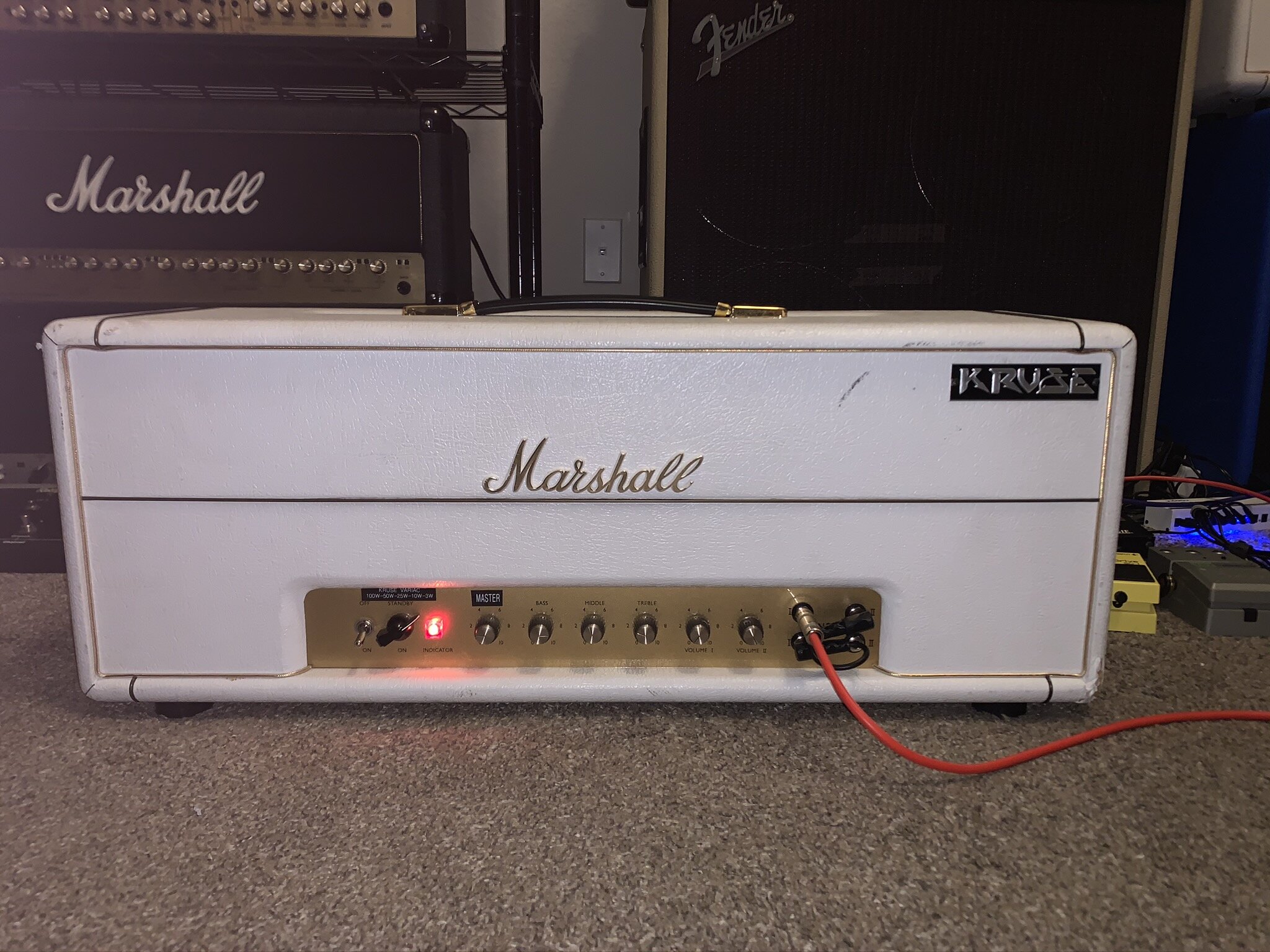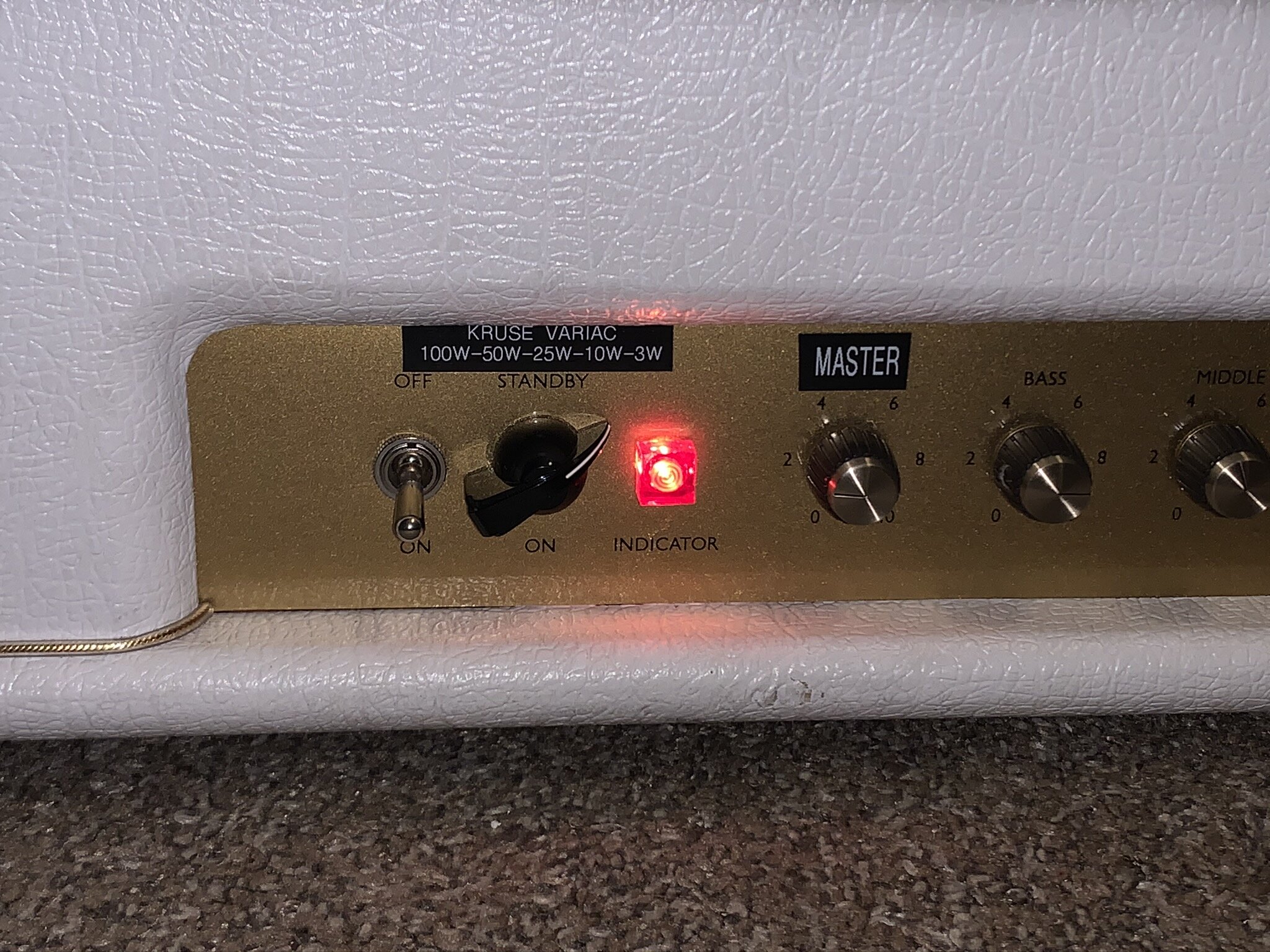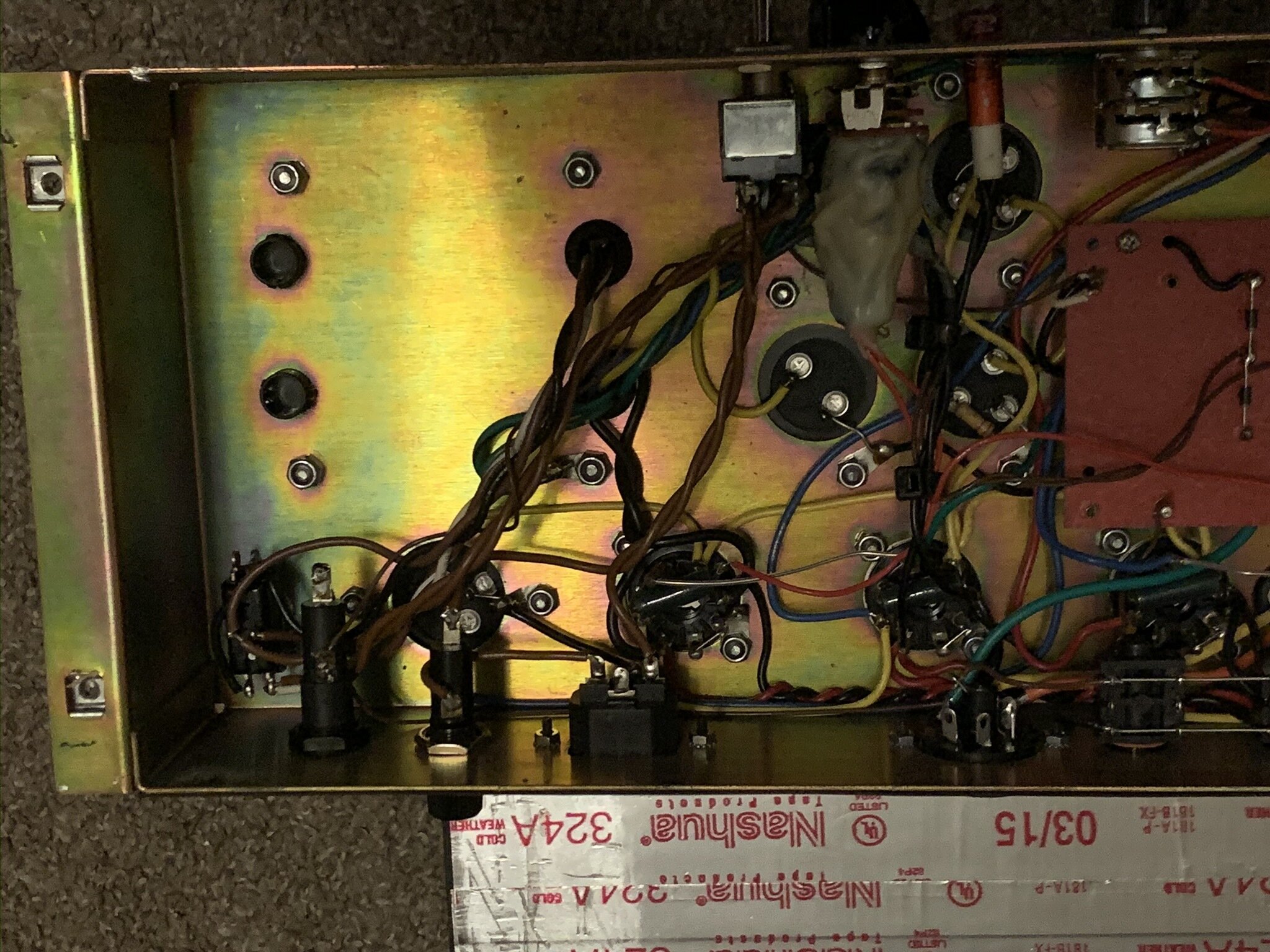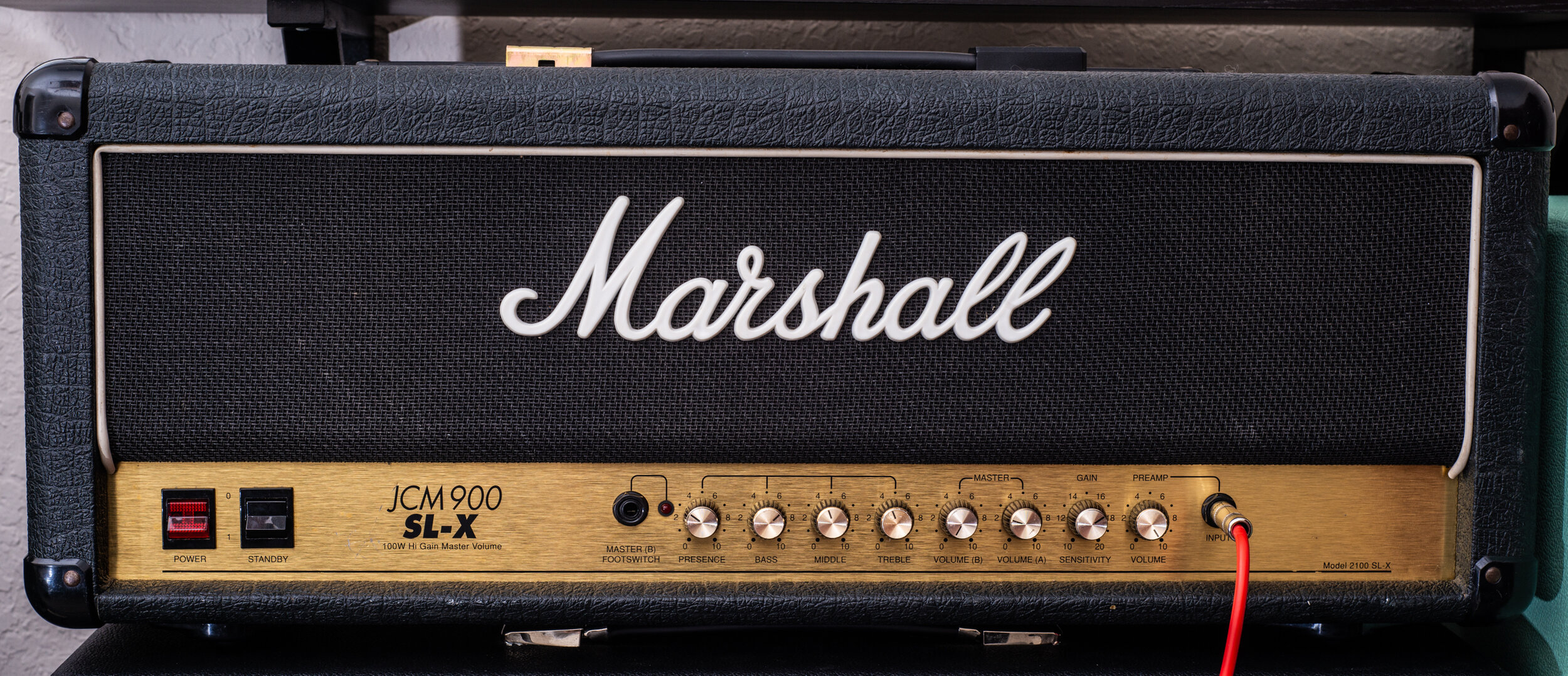Well here it is, the ultimate Rectifier (almost). Not quite the top of the range “Road King,” this amp shares most of its features. Four channels, including two clean channels supposedly ripped from the Lonestar amp series, a spring reverb tank, an insanely huge footswitch, and the two Recto distortion channels we all know and love, this seems like just about the perfect amp on paper.
And it is a hell of an amp, with one of the best spring reverbs and clean channels I’ve ever heard. My preference has been to run channel 2 in clean mode as my main clean sound, then use channel 1 in tweed mode for a slightly pushed clean sound. Channel 2’s “brit” mode replaces the “tweed” of channel 1, and I find the “brit” mode to be a bit underwhelming and too bright without enough bass to back it up.
Channels 3 and 4 are supposed to be the same as the classic rectifier drive channels, but it’s pretty clear they aren’t exact copies. These channels have a bit less gain than either my 3 channel or 2 channel Rev G rectiifiers, and unlike the 3rd channel of that triple rec, channel 4 on the roadster does not have the same very sensitive Presence control taper to manipulate the tone.
I also notice this amp, when compared to my other rectifiers, has a tendency to overwhelm the cabinet with bass frequencies resulting in the speakers farting out at volume. This problem is the worst on this amp, happens occasionally on the 3 channel, and only very rarely on the 2 channel - I guess this is intentional since it seems Mesa is designing their amps to accentuate this. Perhaps if I were using brand new speakers instead of vintage ones I wouldn’t notice as much.
It sounds like I’m not thrilled with this amp - I am, it’s a great amp. But I think in the quest to again offer more versatility, it falls a little flat as far as achieving the now classic rectifier distortion tones. It does get close though, and the extra versatility especially the dual clean channels can really add a lot of options. Coupled with the other cool features of this amp it’s hard to argue with its value, though I think it’s pretty indicative that these amps regularly sell for around the same price as standard 2 and 3 channel rectifiers. You’d think with all of these cool features and an extra channel it’d be worth more, but I’m sure I’m not the only metal player who would rather have a more standard rectifier.















